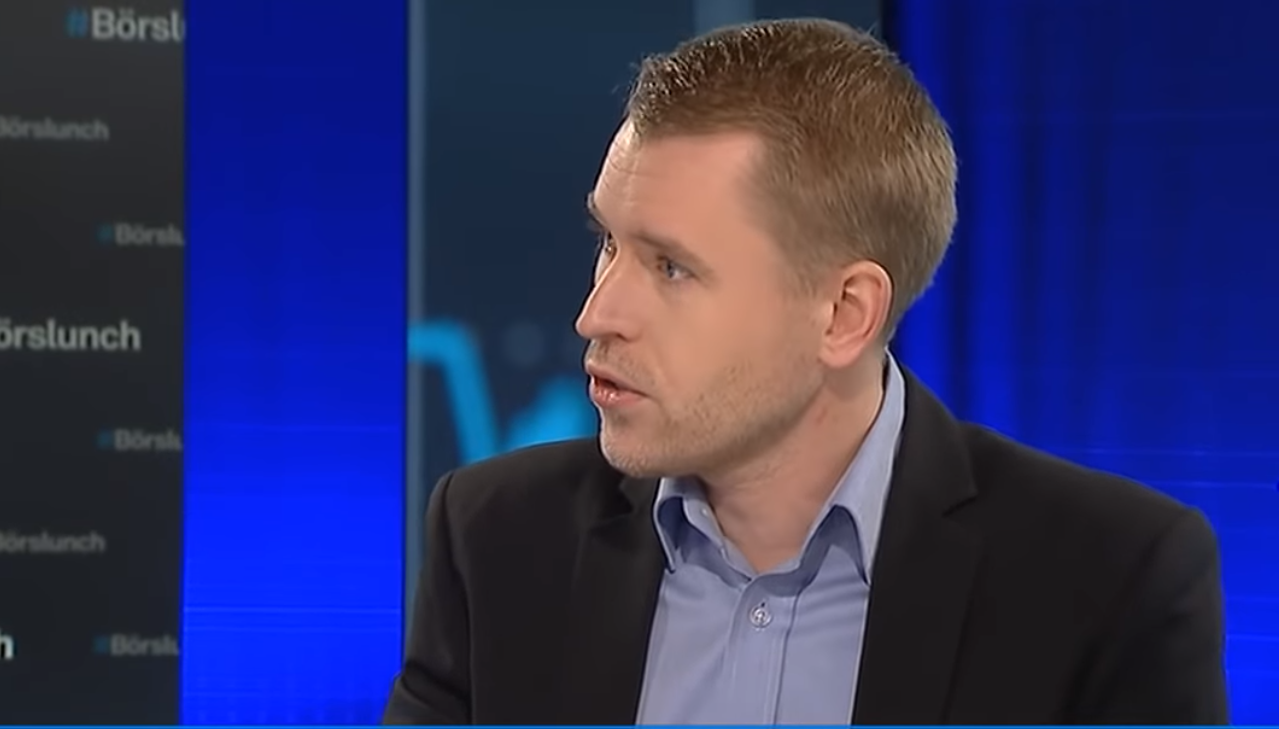Analys från DailyFX
USD/JPY Technical Analysis: Fault Lines Are Showing Favoring JPY
Talking Points:
- USD/JPY Technical Strategy: Sideways Consolidation Favors Downward Continuation
- USD/JPY Cross-Currency Basis Hits Lowest Level Since 2011
- Triangle Pattern In Focus, Downside Breakdown Favored
USD/JPY has moved off the psychological barrier of 100 multiple times in rather aggressive fashion since first testing sub-100 after the EU referendum showed a win for the ‘Vote Leave’ group. The ability for USD/JPY to hold above 100 doesn’t mean it is a good time to go long.
If you look at interbank funding, referred to as the global financial system’s plumbing by ADM’s Paul Mylchreest, you can see stress is continuing to build, which could lead to a further unwind of the carry trade that has led to a stronger than expected Japanese Yen. The reason du jour of the interbank funding stress has recently been blamed on liquidity worries at Deutsche Bank. There has been a clear trend for 2016 of higher borrowing costs for USD funding with 3-month USD/JPY cross-currency basis trading near -80bps, the widest since April 2011 per Bloomberg data when USD/JPY was trading near 80.
USD/JPY Continues Below Heavy Resistance (Median Line) on Unrelenting JPY Strength
Looking above, you can see what appears to be a very clear downtrend alongside the Ichimoku Cloud, and Andrew’s Pitchfork, and a Triangle Patter consolidation (purple.) When a strong trend is clear, any consolidation is favored as a prelude to a continuation of the trend as opposed to a basing effect before a strong move higher.
While the USD has performed well against some currencies during the recent stress, the JPY is unique in that the carry trade where JPY are borrowed to buy higher-yielding assets continues to unwind and lead to unrelenting JPY strength.
The price continues to revolve barely above 100. Of the Indicators above, Ichimoku Cloud would be one of the first to register a Bullish signal on a break and close above 103.12 on the daily chart. Short-term resistance looks to be the 61.8% retracement of the September range, which sits at 102.75. The zone between 103.12/102.75 should make for good resistance if we are on the precipice of another breakdown.
Lastly, the Andrew’s Pitchfork (Red) would not concede that the Bear Run in USD/JPY is likely over until a break above the internal upper parallel line that aligns nicely with the 50% retracement of the 4-Month Range at ~105.50.
Shorter-Term USD/JPY Technical Levels: September 30, 2016
For those interested in shorter-term levels of focus than the ones above, these levels signal important potential pivot levels over the next 48-hours.
Analys från DailyFX
EURUSD Weekly Technical Analysis: New Month, More Weakness
What’s inside:
- EURUSD broke the ‘neckline’ of a bearish ‘head-and-shoulders’ pattern, April trend-line
- Resistance in vicinity of 11825/80 likely to keep a lid on further strength
- Targeting the low to mid-11600s with more selling
Confidence is essential to successful trading, see this new guide – ’Building Confidence in Trading’.
Coming into last week we pointed out the likelihood of finally seeing a resolution of the range EURUSD had been stuck in for the past few weeks, and one of the outcomes we made note of as a possibility was for the triggering of a ’head-and-shoulders’ pattern. Indeed, we saw a break of the ’neckline’ along with a drop below the April trend-line. This led to decent selling before a minor bounce took shape during the latter part of last week.
Looking ahead to next week the euro is set up for further losses as the path of least resistance has turned lower. Looking to a capper on any further strength there is resistance in the 11825-11880 area (old support becomes new resistance). As long as the euro stays below this area a downward bias will remain firmly intact.
Looking lower towards support eyes will be on the August low at 11662 and the 2016 high of 11616, of which the latter just happens to align almost precisely with the measured move target of the ‘head-and-shoulders’ pattern (determined by subtracting the height of the pattern from the neckline).
Bottom line: Shorts look set to have the upperhand as a fresh month gets underway as long as the euro remains capped by resistance. On weakness, we’ll be watching how the euro responds to a drop into support levels.
For a longer-term outlook on EURUSD, check out the just released Q4 Forecast.
EURUSD: Daily
—Written by Paul Robinson, Market Analyst
You can receive Paul’s analysis directly via email bysigning up here.
You can follow Paul on Twitter at@PaulRobinonFX.
Analys från DailyFX
Euro Bias Mixed Heading into October, Q4’17

Why and how do we use IG Client Sentiment in trading? See our guide and real-time data.
EURUSD: Retail trader data shows 37.3% of traders are net-long with the ratio of traders short to long at 1.68 to 1. In fact, traders have remained net-short since Apr 18 when EURUSD traded near 1.07831; price has moved 9.6% higher since then. The number of traders net-long is 15.4% lower than yesterday and 16.4% higher from last week, while the number of traders net-short is 0.4% higher than yesterday and 10.5% lower from last week.
We typically take a contrarian view to crowd sentiment, and the fact traders are net-short suggests EURUSD prices may continue to rise. Positioning is more net-short than yesterday but less net-short from last week. The combination of current sentiment and recent changes gives us a further mixed EURUSD trading bias.
— Written by Christopher Vecchio, CFA, Senior Currency Strategist
To contact Christopher Vecchio, e-mail cvecchio@dailyfx.com
Follow him on Twitter at @CVecchioFX
To be added to Christopher’s e-mail distribution list, please fill out this form
Analys från DailyFX
British Pound Reversal Potential Persists Heading into New Quarter

Why and how do we use IG Client Sentiment in trading? See our guide and real-time data.
GBPUSD: Retail trader data shows 38.2% of traders are net-long with the ratio of traders short to long at 1.62 to 1. In fact, traders have remained net-short since Sep 05 when GBPUSD traded near 1.29615; price has moved 3.4% higher since then. The number of traders net-long is 0.1% higher than yesterday and 13.4% higher from last week, while the number of traders net-short is 10.6% lower than yesterday and 18.3% lower from last week.
We typically take a contrarian view to crowd sentiment, and the fact traders are net-short suggests GBPUSD prices may continue to rise. Yet traders are less net-short than yesterday and compared with last week. Recent changes in sentiment warn that the current GBPUSD price trend may soon reverse lower despite the fact traders remain net-short.
— Written by Christopher Vecchio, CFA, Senior Currency Strategist
To contact Christopher Vecchio, e-mail cvecchio@dailyfx.com
Follow him on Twitter at @CVecchioFX
To be added to Christopher’s e-mail distribution list, please fill out this form
-
Analys från DailyFX10 år ago
EUR/USD Flirts with Monthly Close Under 30 Year Trendline
-

 Marknadsnyheter2 år ago
Marknadsnyheter2 år agoUpptäck de bästa verktygen för att analysera Bitcoin!
-
Marknadsnyheter5 år ago
BrainCool AB (publ): erhåller bidrag (grant) om 0,9 MSEK från Vinnova för bolagets projekt inom behandling av covid-19 patienter med hög feber
-
Analys från DailyFX12 år ago
Japanese Yen Breakout or Fakeout? ZAR/JPY May Provide the Answer
-

 Marknadsnyheter2 år ago
Marknadsnyheter2 år agoDärför föredrar svenska spelare att spela via mobiltelefonen
-
Analys från DailyFX12 år ago
Price & Time: Key Levels to Watch in the Aftermath of NFP
-
Analys från DailyFX8 år ago
Gold Prices Falter at Resistance: Is the Bullish Run Finished?
-

 Nyheter7 år ago
Nyheter7 år agoTeknisk analys med Martin Hallström och Nils Brobacke












